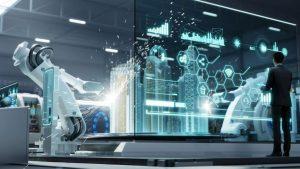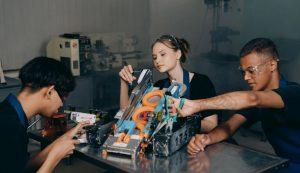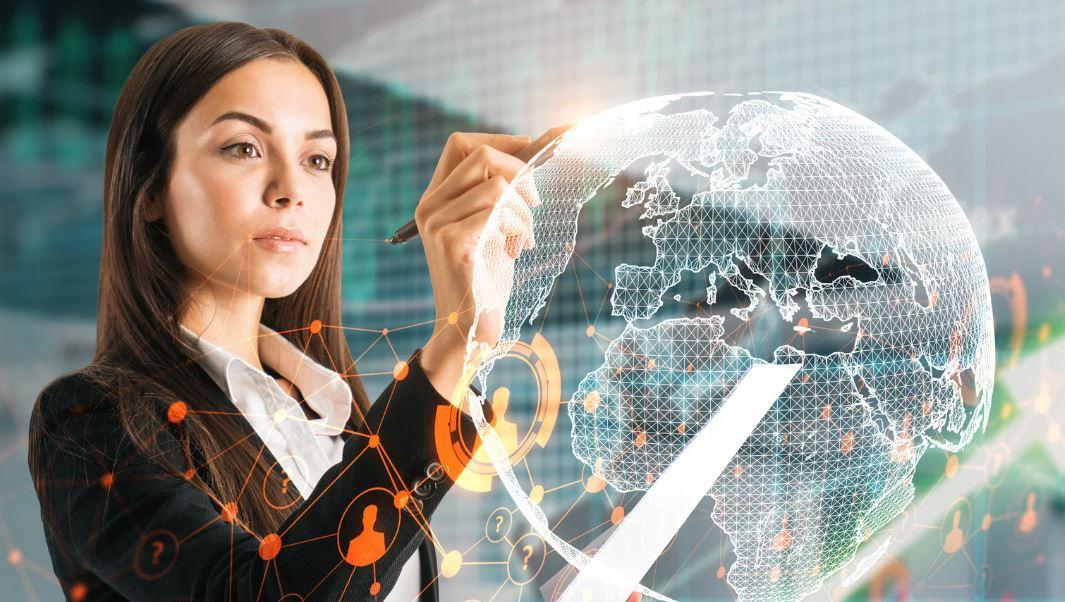Global commerce is in the midst of a transformative era unlike any witnessed before. As businesses expand their reach across borders, the complexity of supply chains, logistics, and market dynamics demands smarter solutions.
Artificial intelligence and automation have emerged as the central forces reshaping these landscapes, pushing companies to reconsider how they design, produce, and deliver products worldwide.
This evolution is not just about cost savings or speed, it’s about reimagining the very nature of trade itself. For executives and policymakers alike, understanding the opportunities and challenges that these technologies present is essential to remaining competitive in an increasingly connected world.
As we explore The Future of Trade: How AI and Automation Are Reshaping Global Commerce, it’s clear that the integration of intelligent systems is driving an unprecedented wave of efficiency, customization, and resilience.
But these changes are not uniformly distributed. Some industries and regions are racing ahead, while others lag behind, risking obsolescence if they fail to adapt. By embracing innovations in AI-driven forecasting, robotics, and process automation, companies are fundamentally altering the competitive landscape.
This article offers an in-depth examination of the technological drivers, the operational realities of implementation, and the strategic imperatives for businesses that want to stay ahead in this new era of trade.
How AI and Automation Are Reshaping Global Commerce?

Global trade has always been shaped by powerful forces: geography, natural resources, geopolitics, and economics. But today, technology is the single most disruptive factor. AI and automation are no longer optional enhancements, they are the linchpins of modern trade strategy.
From predictive analytics that anticipate demand surges to automated ports that streamline shipping logistics, these tools redefine what is possible. Companies that harness these innovations gain the ability to respond to real-time data, optimize supply chains on the fly, and deliver unmatched customer experiences.
They can shift production closer to demand centers or reroute shipments instantly to avoid disruptions. The new reality is one in which agility and intelligence are more valuable than sheer scale.
AI systems can detect subtle patterns in purchasing behavior and adjust marketing, pricing, and production accordingly. Automated systems handle the complexity of compliance across multiple jurisdictions, ensuring goods clear customs faster and with fewer errors. For businesses, these technologies promise not just operational improvements but strategic breakthroughs.
By adopting intelligent systems, firms can transform traditional linear supply chains into interconnected, responsive networks that can weather shocks, from pandemics to geopolitical crises. This shift is more than technological; it’s a fundamental change in the way companies think about trade itself.
“AI and automation are not optional upgrades, they are essential strategies for businesses aiming to remain competitive in an increasingly interconnected world.”
Adopting these technologies also changes the competitive dynamic across industries. Smaller firms can use cloud-based AI tools to compete with multinationals, while large corporations can exploit economies of scale in data to outmaneuver rivals. The democratization of AI, via easy-to-use platforms and services, means the barrier to entry is lower than ever.
Even specialized services like trade copier solutions are making advanced trading strategies accessible to smaller market participants. But this accessibility also raises the stakes, as firms that fail to adapt risk being left behind in a landscape that rewards speed, precision, and intelligence.
The Role of Artificial Intelligence in Supply Chain Optimization
Artificial intelligence is revolutionizing the way companies plan, manage, and optimize their global supply chains. Gone are the days when supply chain management was a linear, manual, and often opaque process.
Instead, AI enables a level of real-time visibility and adaptability that was previously unimaginable. Machine learning models analyze enormous volumes of data, identifying trends and anomalies with precision.
For example, companies can predict demand spikes during unforeseen events, allowing them to adjust production schedules and distribution plans proactively. This predictive capability reduces waste, cuts costs, and ensures higher service levels, a competitive advantage that’s hard to replicate.
Moreover, AI doesn’t operate in isolation. It integrates with enterprise resource planning systems, transportation management software, and inventory control systems to create a seamless, intelligent network.
This interconnectedness means that when an issue arises, like a supplier delay or a weather-related shipping disruption, the entire system can respond automatically. AI-powered platforms reroute shipments, reallocate inventory, and even renegotiate contracts in real time.
The result is a supply chain that’s not only efficient but also resilient, capable of withstanding the shocks that have become increasingly common in global trade.
The impact is felt across industries. In retail, AI predicts consumer trends with unprecedented accuracy, reducing markdowns and stockouts. In manufacturing, AI-driven scheduling minimizes downtime and maximizes throughput.
Even in sectors with traditionally long lead times, such as aerospace or pharmaceuticals, AI brings agility by identifying bottlenecks and proposing solutions before they escalate into crises. By transforming supply chains into responsive, learning systems, AI turns logistics from a cost center into a strategic asset.
Automation Technologies Revolutionizing Trade Processes

Automation goes beyond software and algorithms, it includes the physical machinery and systems that move goods across the world. Robotics, autonomous vehicles, and advanced material handling systems are changing the fundamental economics of trade.
Warehouses are increasingly staffed by fleets of collaborative robots that pick, pack, and ship goods with speed and accuracy unmatched by human workers.
Ports are deploying automated cranes and self-driving trucks to move containers faster and with fewer errors. These advancements reduce costs while increasing throughput, making global trade more efficient and scalable than ever before.
Businesses are also leveraging automation to standardize and accelerate complex documentation processes. Cross-border trade has long been burdened by mountains of paperwork and slow customs procedures.
Now, automated documentation systems and blockchain technologies ensure that bills of lading, certificates of origin, and regulatory filings are processed instantly and with full traceability.
This not only cuts down on administrative overhead but also reduces opportunities for fraud and error. Governments, too, are adopting these technologies, streamlining customs operations and reducing border delays.
- Autonomous trucks and ships are on the verge of becoming mainstream, reducing transportation costs while increasing reliability.
- Warehouse robotics allow for 24/7 operations without fatigue, error, or safety concerns inherent in human labor.
- Smart customs systems automatically assess tariffs, ensure compliance, and clear goods faster than traditional methods.
These innovations are not merely incremental improvements; they represent a paradigm shift. As automation becomes more advanced and affordable, even small and mid-sized companies can access capabilities once reserved for the largest multinationals.
This democratization of technology ensures that global trade will become more competitive, dynamic, and inclusive, rewarding those who invest strategically in the right systems and processes.
Integrating Intelligent Systems: Challenges and Opportunities

While the benefits of AI and automation in trade are undeniable, their implementation introduces a range of challenges that companies must navigate carefully. The most immediate hurdle is the significant upfront investment required to deploy advanced technologies.
From purchasing robotics to integrating sophisticated AI software into existing systems, the costs can be daunting, especially for smaller businesses with limited capital.
However, these investments often pay off through long-term cost reductions, increased efficiency, and enhanced competitiveness. The key lies in strategic planning: companies that approach automation as a phased, evolving process are better positioned to balance short-term pressures with long-term gains.
Beyond financial considerations, there’s the human dimension. Automation inevitably changes the nature of work, requiring companies to reskill employees for new, higher-value roles.
Rather than eliminating jobs entirely, AI and automation often shift demand toward positions focused on system management, data analysis, and process improvement. Investing in workforce development is therefore critical not just for ensuring smooth transitions but also for maintaining morale and loyalty among employees.
Additionally, organizational culture must evolve to embrace data-driven decision-making and continuous learning. Companies that treat technology purely as a tool, without considering these human factors, risk failed implementations and wasted investments.
Data privacy and security present yet another critical challenge. As companies collect and process vast quantities of sensitive information, they become more attractive targets for cyberattacks. Ensuring robust cybersecurity is therefore essential, not just to protect assets, but to maintain trust with customers and partners.
Moreover, navigating the complex regulatory environments across different jurisdictions adds another layer of difficulty. Governments around the world are tightening rules around data sovereignty and privacy, meaning that companies must build compliance into their systems from the ground up.
| Challenge | Opportunity |
| High upfront investment | Long-term cost savings and ROI |
| Workforce reskilling | Creation of new, higher-value roles |
| Data privacy and security | Competitive advantage through trusted systems |
| Complex cross-border rules | Streamlined compliance with automated systems |
Companies that proactively address these challenges position themselves to reap the full benefits of AI and automation.
By embedding these considerations into their strategic plans, they can create a resilient, adaptable organization capable of thriving in the modern trade environment.
Embracing the Future of Trade
The landscape of global commerce is changing at a pace that demands both agility and vision from today’s business leaders. Companies can no longer afford to view AI and automation as optional or experimental. Instead, these technologies must be integrated as core elements of their trade strategies.
Those that embrace this shift gain access to unprecedented levels of efficiency, accuracy, and customer responsiveness, advantages that can define market leadership in the years to come.
As The Future of Trade: How AI and Automation Are Reshaping Global Commerce continues to unfold, the gap between innovators and laggards will only widen.To navigate this new reality, businesses should take a deliberate and comprehensive approach.
First, they must invest in training and reskilling their workforce, ensuring employees are equipped to work alongside advanced technologies.
Second, robust data governance and cybersecurity frameworks are essential to protect sensitive information and maintain customer trust. Third, companies should seek partnerships with technology providers who can deliver scalable, flexible solutions tailored to their unique needs.
These steps are not merely tactical but strategic imperatives that can determine a company’s long-term success in the global marketplace.
Moreover, the companies that thrive will be those that view AI and automation not as ends in themselves but as enablers of a more responsive, customer-centric, and resilient business model.
They will leverage these tools to create supply chains that can adapt to sudden disruptions, deliver personalized products and services, and compete in markets that are more interconnected than ever before.
In this sense, the true promise of AI and automation lies not just in doing things faster or cheaper, but in reimagining what is possible in the world of trade.









Leave feedback about this